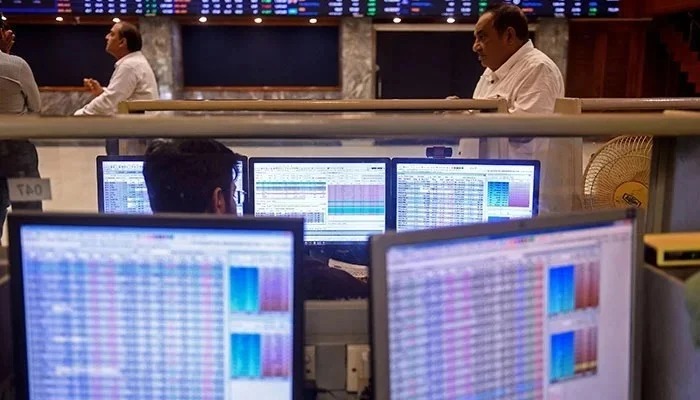
Bearish sentiment persisted in the stock market on Tuesday as profit-taking, driven by mutual fund redemptions, and pressure on energy stocks weighed on trading.
Concerns about circular debt in the gas sector and rising government debt levels added to the cautious tone.
The Pakistan Stock Exchange’s (PSX) benchmark KSE-100 index posted early gains, climbing 588.29 points, or 0.51 percent, to hit an intraday high of 116,843.41. However, selling pressure dragged the index to a low of 113,792.13, reflecting a decline of 2,462.99 points, or -2.12%, from the previous close.
“Profit-taking driven by redemptions of some major mutual funds,” said Muhammad Saad Ali, head of research at Intermarket Securities Ltd.
“The pressure on energy names is driven by the announcement of a diversion of RLNG towards residential consumers, which could lead to a further accumulation of circular debt,” he added.
Diversion of regasified liquefied natural gas (RLNG) to the domestic sector jumped to 450 million cubic feet per day in January 2025, from 250 million cubic feet per day in December 2024, under the jurisdiction of Sui Northern Gas Pipelines Limited. This increase is expected to exacerbate circular debt in the gas sector.
The current average domestic tariff is Rs 1,250 per MMBTU, while the RLNG tariff stands at Rs 3,600 per MMBTU. This differential of Rs 2,350 per MMBTU will directly contribute to the growing circular debt, raising concerns over financial pressure on gas utilities.
Finance Minister Muhammad Aurangzeb, speaking at a Senate Standing Committee meeting on Monday, projected a strong current account surplus for FY25 while ruling out any desperate measures that could jeopardize economic stability.
“Three years ago, the government stepped on the growth accelerator, putting a strain on the balance of payments,” Aurangzeb said. “But no matter how much pressure there is now, we will not repeat this mistake.”
The minister dismissed liquidity concerns, saying there had been no complaints regarding the opening of letters of credit (LC) in the last 10 months. “No foreign company has been prevented from sending profits abroad, which shows that there is no pressure on the currency,” he stressed.
Highlighting foreign interest in Pakistan’s economy, Aurangzeb mentioned significant investment commitments from major global players, including Saudi Aramco, China’s Norinco and electric automobile giant BYD.
The State Bank of Pakistan (SBP) on Monday reported that the government’s total debt increased by Rs 1,452 billion, or 2.1 percent, during the first five months of FY25 to 70,366 billion rupees in November 2024. This increase is attributed to public spending exceeding revenue collection and external debt repayment requirements.
As of June 30, 2024, the total debt stood at Rs 68,914 billion. Debt increased by 1.8% month-on-month and 11% year-on-year (year-on-year) at the end of November.
Domestic debt increased by 3% from July to November FY25, reaching Rs 48,585 billion, an increase of 18% year-on-year. Meanwhile, external debt increased marginally by 0.11 percent to Rs 21.78 trillion during the same period, although it decreased by 2.91 percent year-on-year and by 0.5 percent over a month.
Rising government debt levels, combined with pressures in the energy sector, have led to concerns about fiscal sustainability. These issues come as Pakistan prepares for a critical review under the International Monetary Fund’s (IMF) Expanded Financing Facility (EFF) to release the next $1 billion tranche in March.
The IMF’s proposed levy on gas supplies to industrial captive power plants (CPPs) remains a key structural benchmark under the EFF.
Additionally, Pakistan is expected to receive $20 billion from the World Bank over the next decade under its National Partnership Framework 2025-35.
This funding, awaiting approval on January 14, will align with the government’s National Economic Transformation Plan, targeting GDP growth, poverty reduction and infrastructure improvement.
Inflation trends saw some respite, with short-term inflation, as measured by the Sensitive Price Indicator (SPI), recording a slight weekly decline of 0.26% for the week ending 2 January 2025. However, year-on-year inflation remained high. at 3.97%.
Textile exports, a key contributor to the economy, grew 10% year-on-year in the first half of FY25 to $9.9 billion. This reflects the resilience of one of Pakistan’s critical sectors despite external challenges.
On Monday, the PSX saw a significant decline, with the KSE-100 index closing at 116,255.12, down 1,331.86 points, or -1.13%, from the previous session’s close of 117 586.98.
